





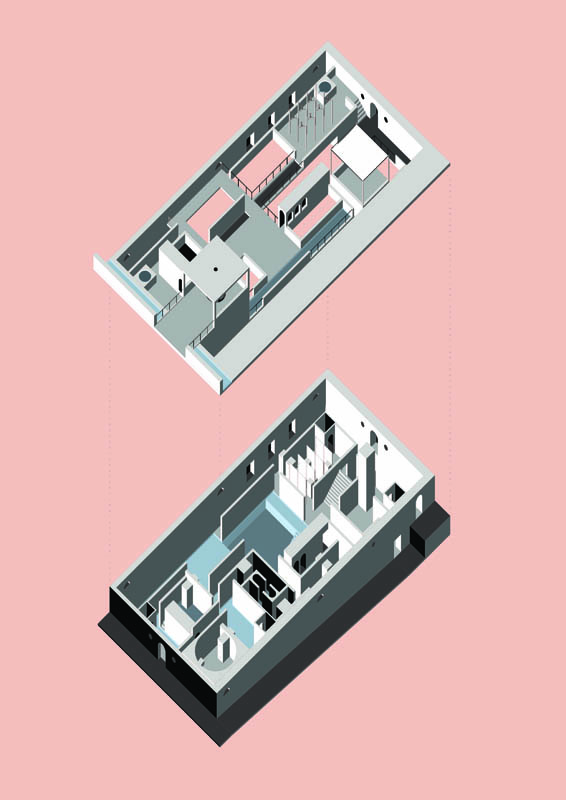

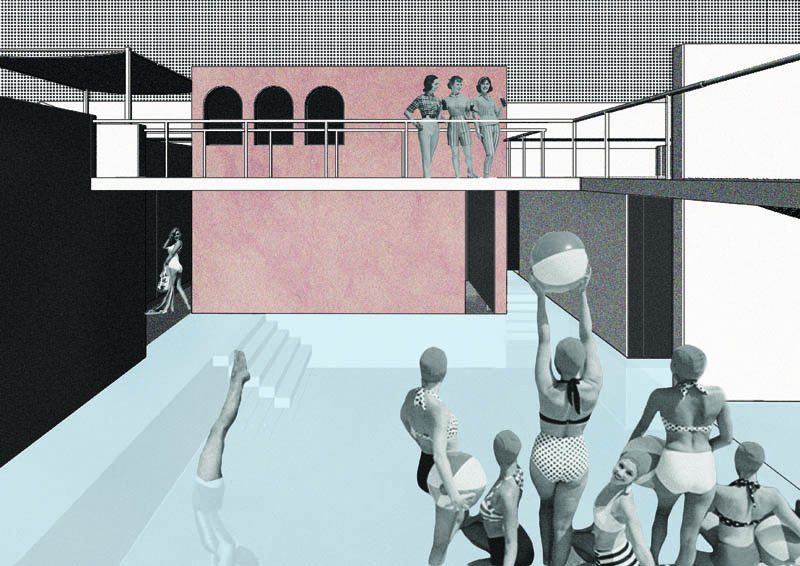

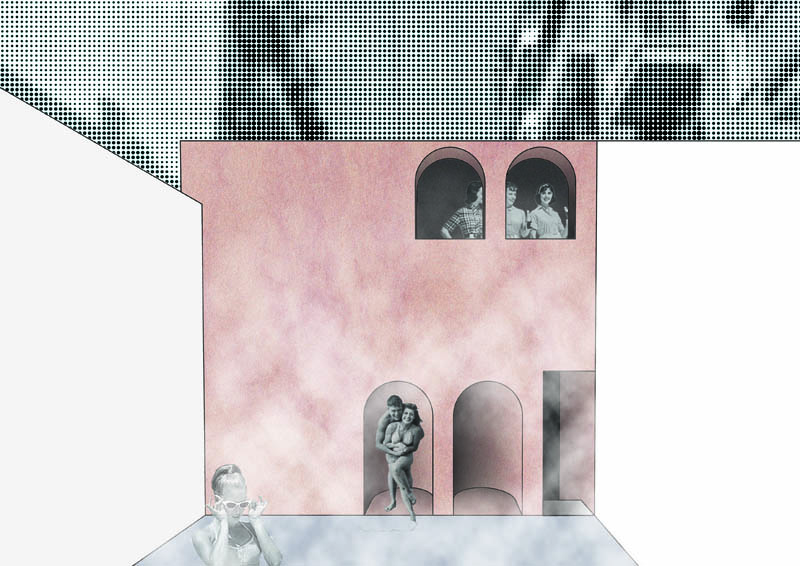

Pleasure. In Architecture? In a hole in the city where the enjoyment dominates and social encounters are favored. Physical pleasures, mental pleasures. Random, scheduled, unexpected meetings. An attempt to create a sequence of atmospheric and sensual spaces that are open to interpretation according to each individual’s idea of pleasure. A quest on body and space relationships. All this research translates into a complex architectural program, where the element of bathing dominates, in an era that the urban culture imposes the "embarassement of the body". In a place where eroticism is not illustrated, an image where limitations are absent is created. The old reservoir in Kolonaki, a basin flooded with water and emotions, is filled with the spaces of receptacles. A hybrid type of building. A new typology. An assemblage of privacy and exposure, blurring the boundaries of the private and the public, pushing the term of intimacy to its limits. The complex of these places is in discourse with the square to which it belongs, creating a heart of exotic idyllicity.
Supervisors: Gavrilou Evelyn, Psychoulis Alexandros
Reference Number: 665




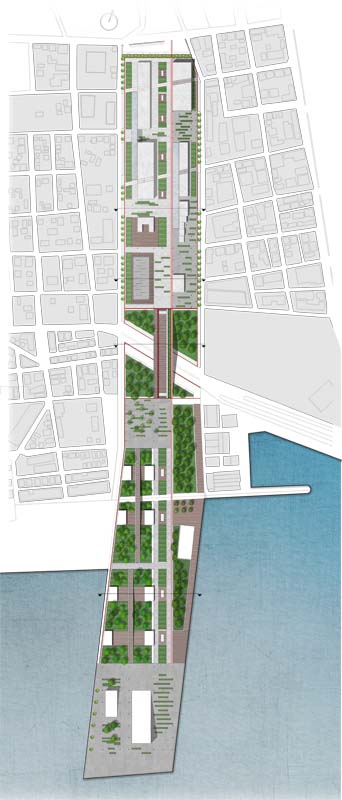

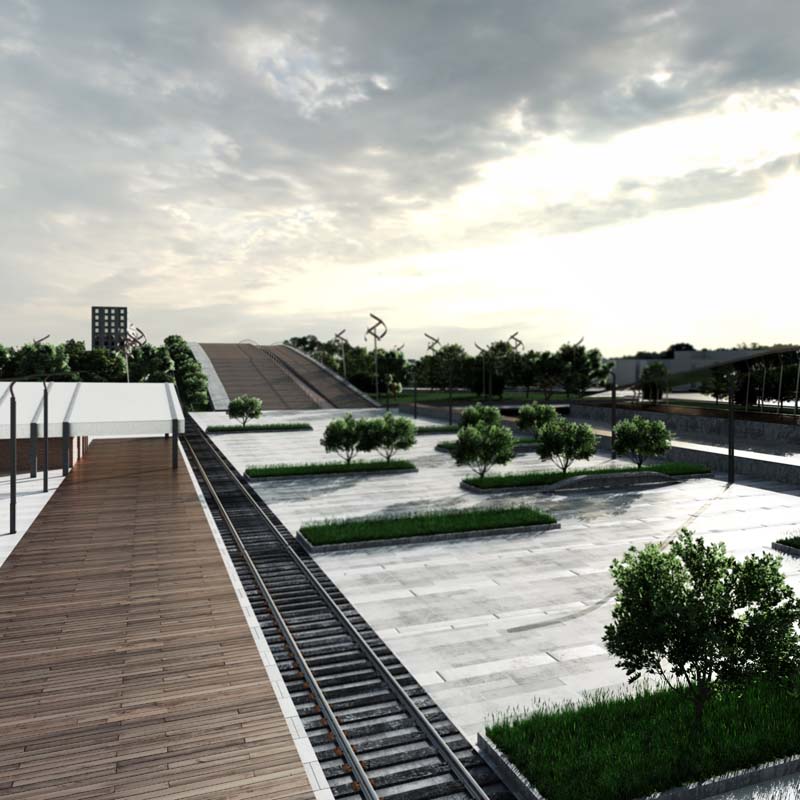

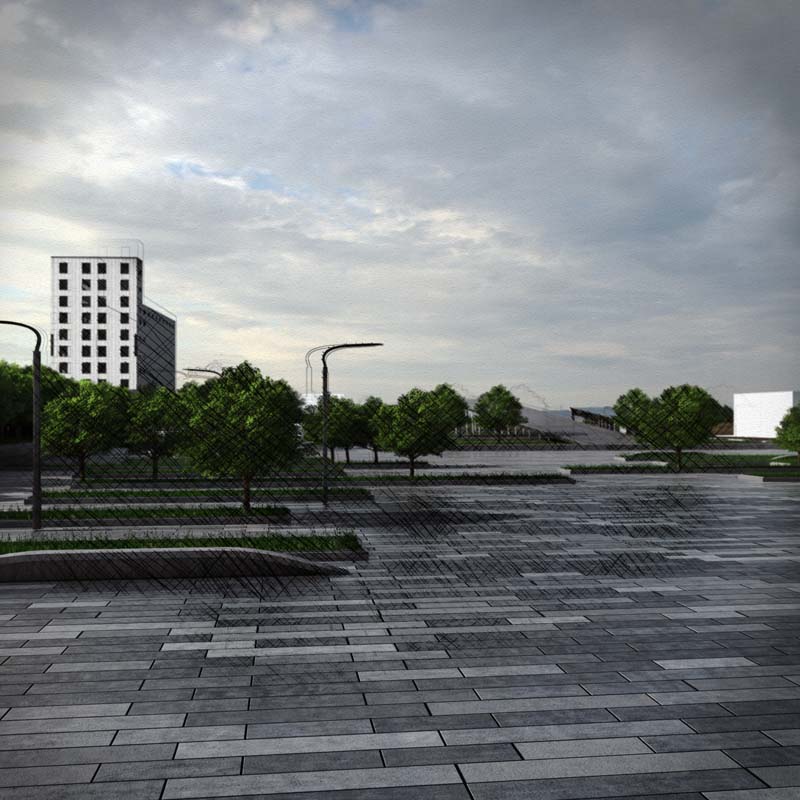



Our thesis refers to a proposal for a linear innovation and cultural park development in the city of Volos. Project’s ambition is to constitute an organization for education, culture, applied scientific research and business initiatives promotion. It aims to the connection of technology achievements with market needs, as well to promote local culture. Affiliation and bonds with local university polytechnic school is of high importance in order to achieve synergies and beneficial results for both sides.
The site of synthesis proposal consists of the current city railway station, the adjacent dock 1 of city port and the intermediate space. Land use situation and specific urban and transport problems of study area are being analyzed. There is also a comparative analysis of the urban, residential and development impacts of the linear park development. Quotations to official state documents and studies such as city regulatory plan, and land use plan are being made in order to prove project feasibility. The architectural part of thesis consists of general master plan plots and four distinctive buildings design analysis : centre for start ups entrepreneurs, hotel SILO, naval history museum and small ships terminal station.
Supervisor: Stylidis Iordanis
Reference Number: 720
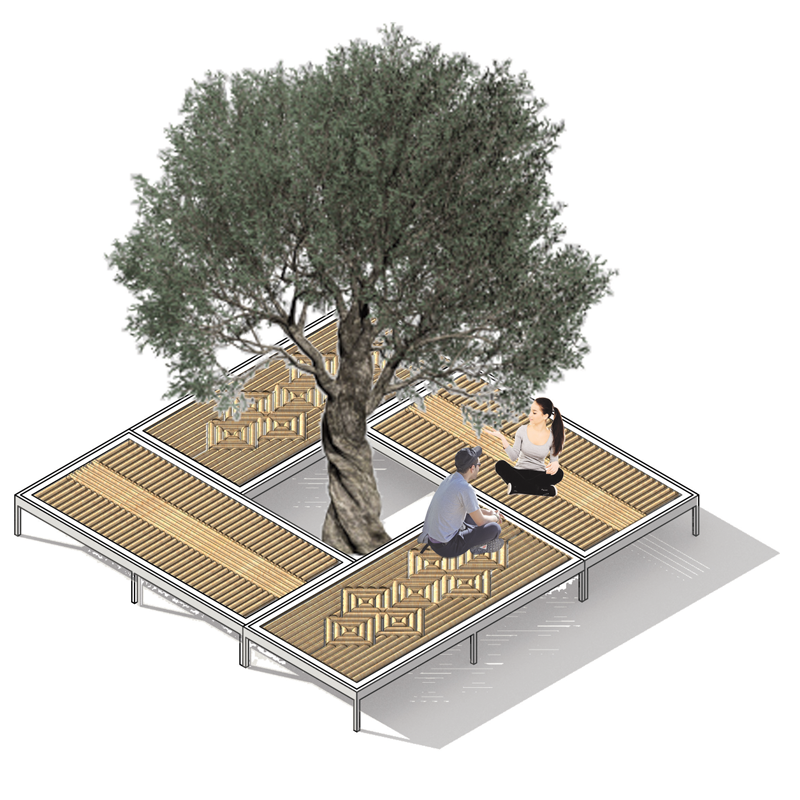

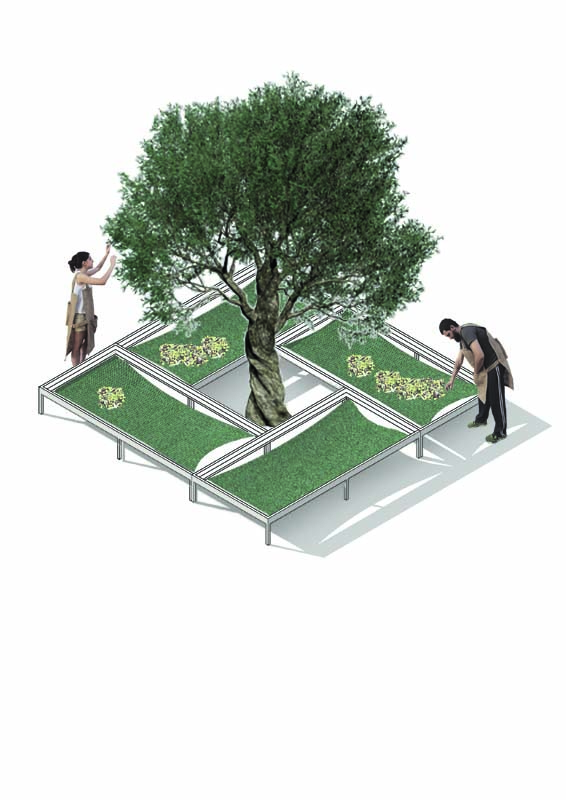



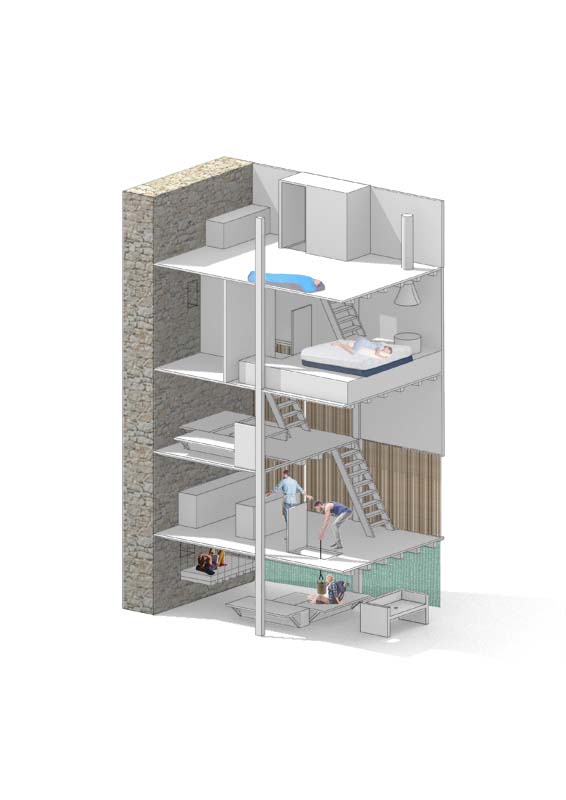



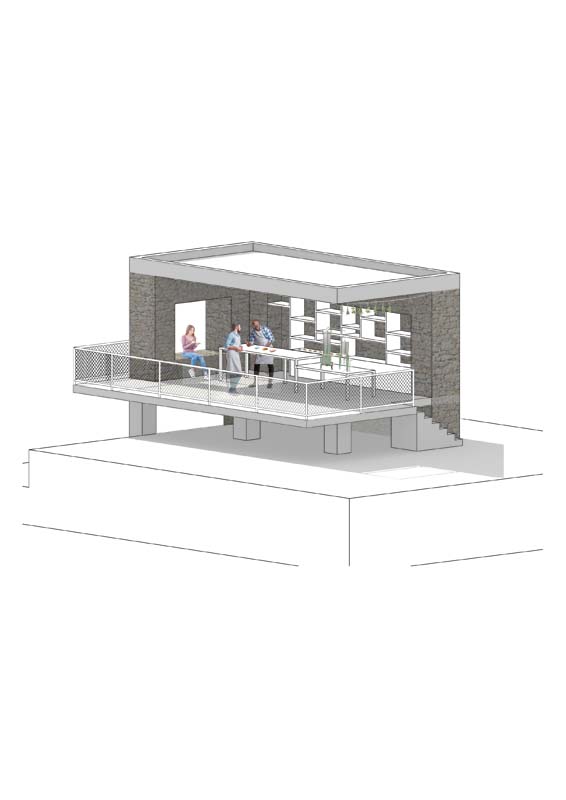

The central axis of this project is the living experience of the landscape and the contact with nature as they are approached through agrotourism and geotourism. As a study area, the Peninsula of Mani is chosen due to the special features of its geomorphology. Through the reading of the area, both remotely and through field research, three types of landscape are defined; "wild", "domesticated" and "structured", corresponding to the natural, the cultivated and the architectural respectively.
The agrotouristic model which is chosen is that of the tourist routes on which some structures are placed. The program is structured around four main axes: harvest, production, cooking and accommodation. As far as the design is concerned, the factors that shaped the construction are tradition, landscape, weather and the needs that derive from the program. As a common language in all structures, there is a heavy structure / wall on which a light one is attached in an attempt to reduce the footprint of the intervention. As a result, the removal of the light structures becomes possible, leaving behind parts of the walls, reminiscent of the ruins of the Manian architecture often encountered during wandering in the landscape. Finally, the scale of the intervention ranges from the scale of cloth and furniture, as a harvest apron is designed, up to the scale of small structures and their location on three indicative plots corresponding to the three types of olive grove that have been identified.
Supervisor: Gavrilou Evelyn
Reference Number: 705












Critical pedagogy is an education model that will not serve the oppressor, but it will help the oppressed to reach the critical consciousness so that they can realize the world that is around them and be able to change it. This way, the oppressed will be able to fight for their needs. The existing typology of the school buildings serves an authoritarian model of the educational process. In this project a new model of school buildings typology is being researched. A school of critical pedagogy will have a direct connection with the city, its inhabitants and the public space. It will be a place of gathering and a pillar in the everyday life of the inhabitants: from the education of children and adults, the upbringing of children and the collective processes of the inhabitants, to the entertainment and cultural uplift of the area. The characteristics of space will favor dialogue, collaboration, collectivity, non-hierarchical relationship of all its users and freedom in expression. This project is located in the area of Akadimia Platonos in Athens, where there is a continuing conflict of interest between residents and investment capital, which aims to upgrade the area for higher social classes who do not live there though. The school of critical pedagogy in Akadimia Platonos aims to upgrade it in the light of the needs of the lower social classes that inhabit it and motivate them to connect with public space, their neighborhoods and to solve collectively the small and big problems they face.
Supervisor: Paniyiris Costis
Reference Number: 715
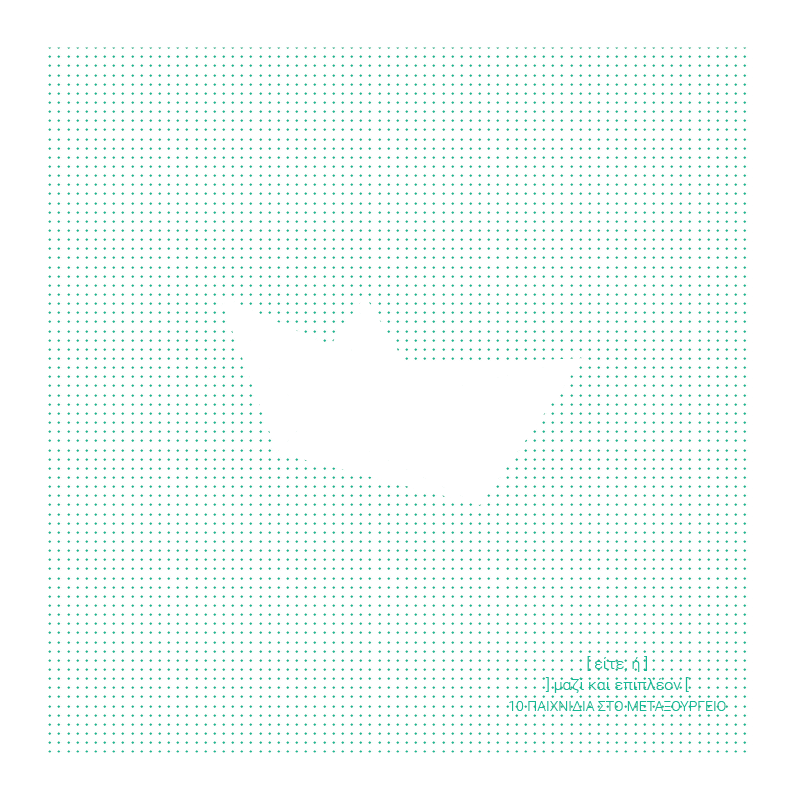

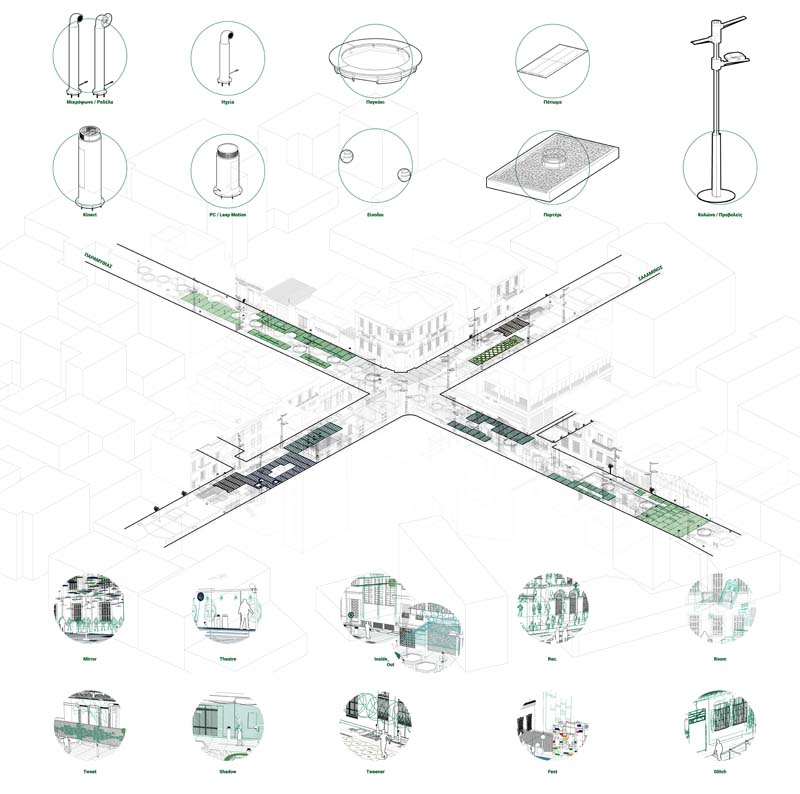



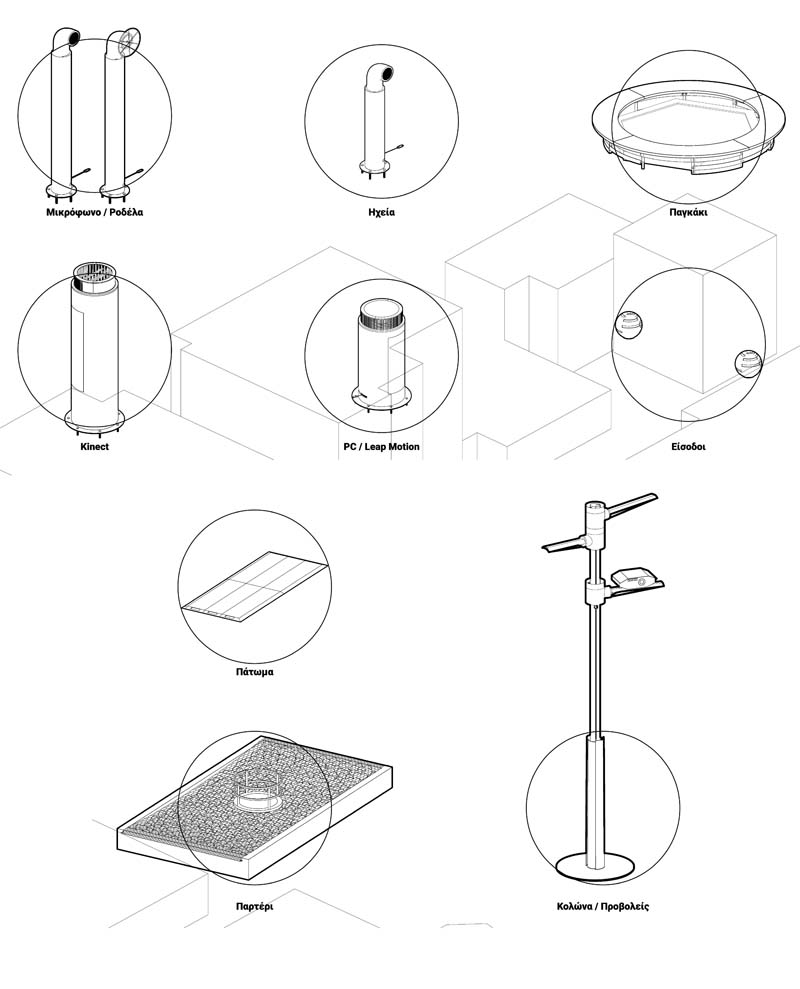

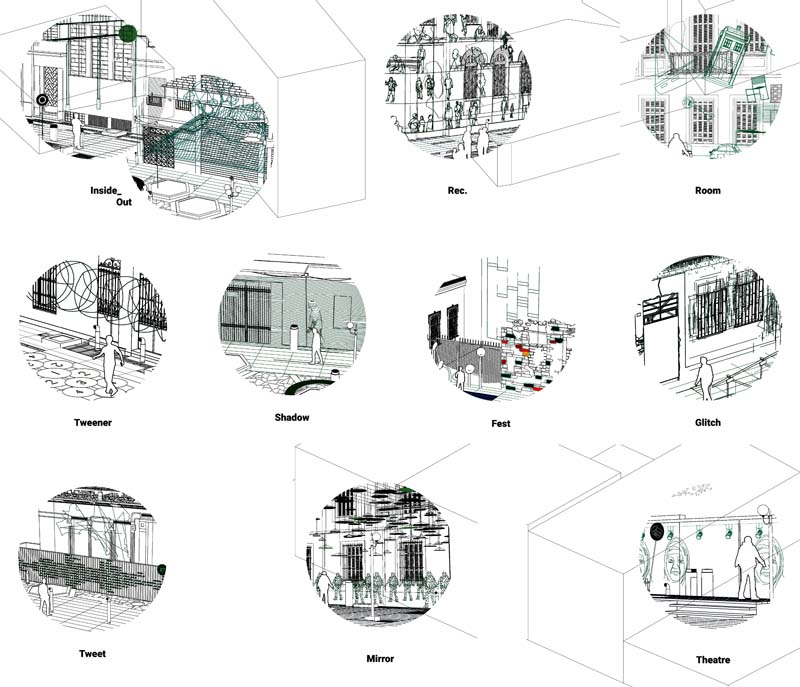

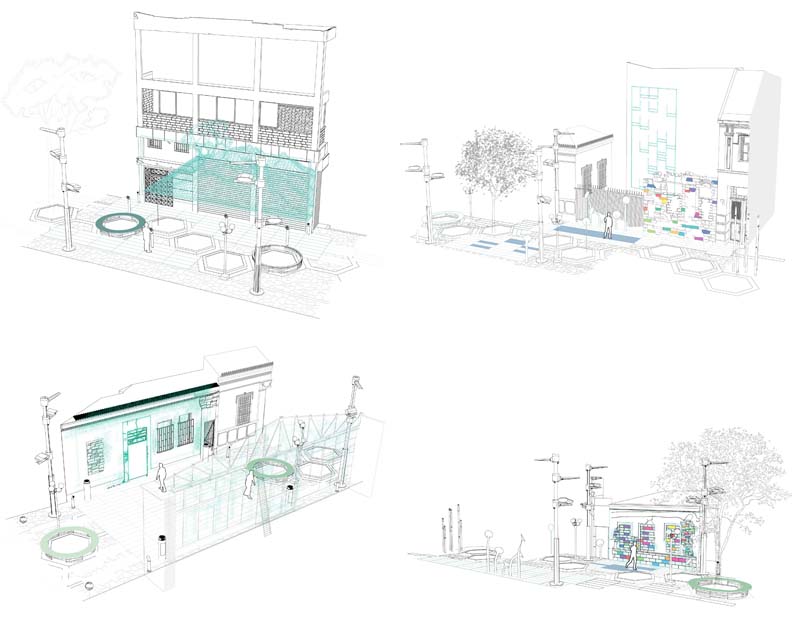

The general image that exists in the shaping and searching for the ideal form in architectural processes seems to be altered over time. Space producing characteristics and processes are emerging in the contemporary architecture that contribute to the creation of an instability that contradicts the uniqueness and sets the foundation for an architecture free of stability and permanence. We can see, therefore, that the knowledge of space has been separated from the stability of the content and the certainty of the meaning. Its production processes are characterized by complexity and do not bear any obvious intentions. The creation of the space is also not distinguishable from duration of time nor is it captive of the place. In this respect, initially, if we consider Rafel Lozano Hemmer’s relational architecture concepts, which are referring to a technological treatment of buildings and public spaces, we can lay the foundations for an unpredictable and dynamic design of the urban landscape. Then, selecting as a place, where such a design can be applied, transitional spaces, like passages or limits between interior and exterior spaces, will result in an additional search of the third, intermediate, space. Transfering from one point to another creates another, ephemeral, reality. The creation of other short-lived realities through mobility, seems to resemble the Foucault’s spatial zone of heterotopia, a zone that hosts alternating meanings of space and time. In the present diploma project, an attempt is being made to assimilate the above concepts in the pedestrian passages that the Parmithias and Salaminos streets are forming in the area of Metaxourgeio, in Athens,Greece. Abandoned buildings of these pedestrian streets are being selected, which through sensory systems and projection mapping, a series of game - interactions are being developed, inspired by Foucault’s heterotopology, aiming to the creation of a dynamic space. Each game is considered to be a folding of the paper boat, on the basis of Foucault’s primarily heteropia of the ship.
Supervisor: Papadopoulos Spiros
Reference Number: 686
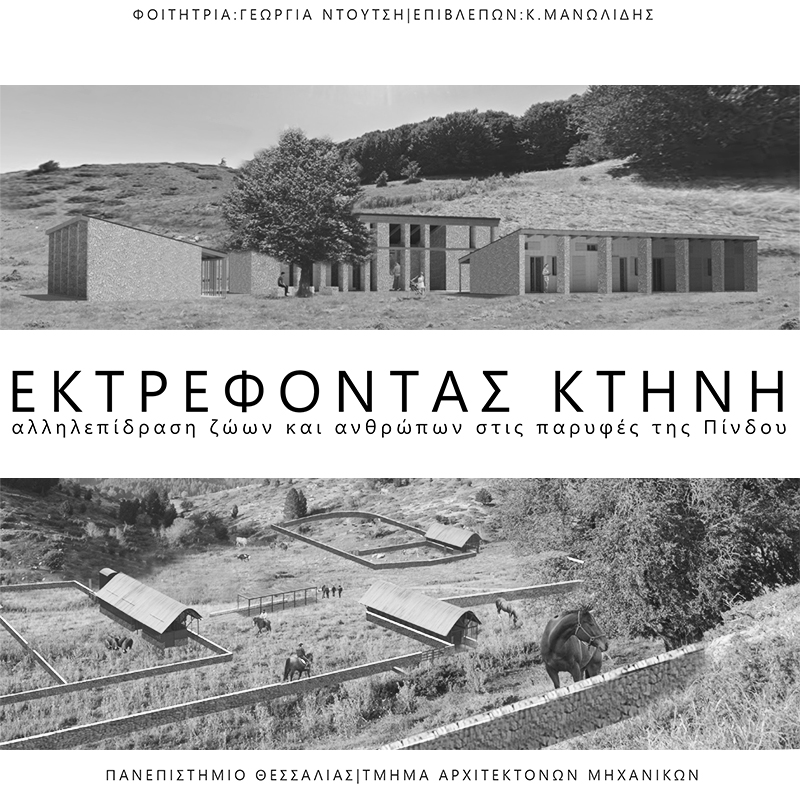











Livestock farming is an integral part of the economic and cultural heritage of Metsovo. The seasonal accommodation of animals in the surrounding area of the artificial lake of the Aoos springs is deeply rooted in time.
This project focuses on the creation of summer installations for indigenous animals in the artificial lake of the Aoos springs, on the basis of bioclimatic and educational elements. The installations include a laboratory for processing animal products, short-stay rooms and staff rooms. The variability in size and semi-permanent character of the buildings take into account the individual characteristics of animals. The laboratory and short-stay rooms are open to visitors and their purpose is educational, since they suffice to accommodate schools and visitors for a short time.
The aim is to create a complex of buildings capable of accommodating people and Greek animal breeds, some of which are facing extinction, by offering ideal conditions for their safe stay and interaction.
Supervisor: Manolidis Kostas
Reference Number: 714
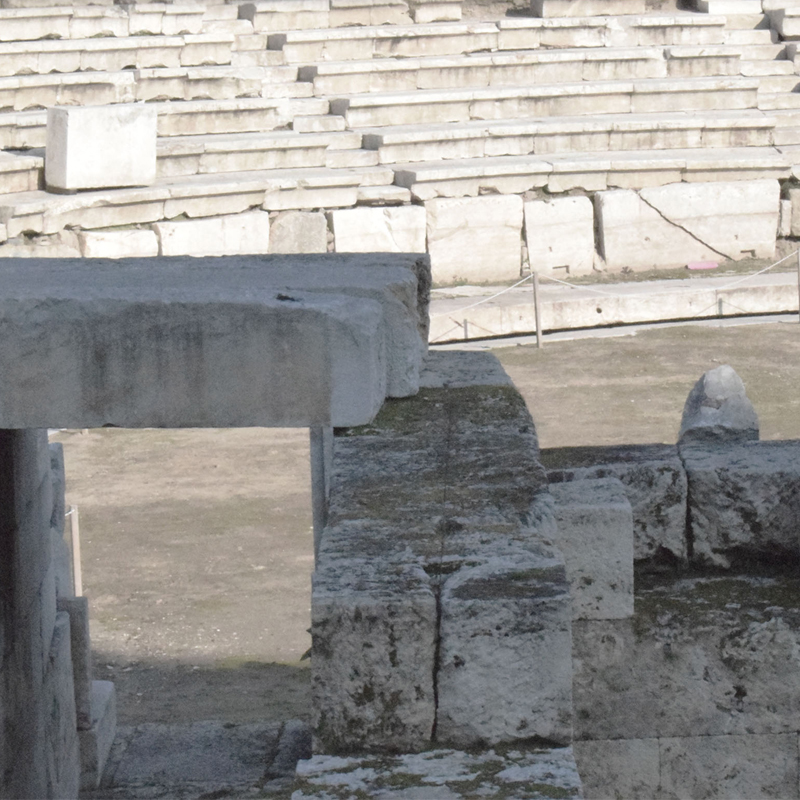

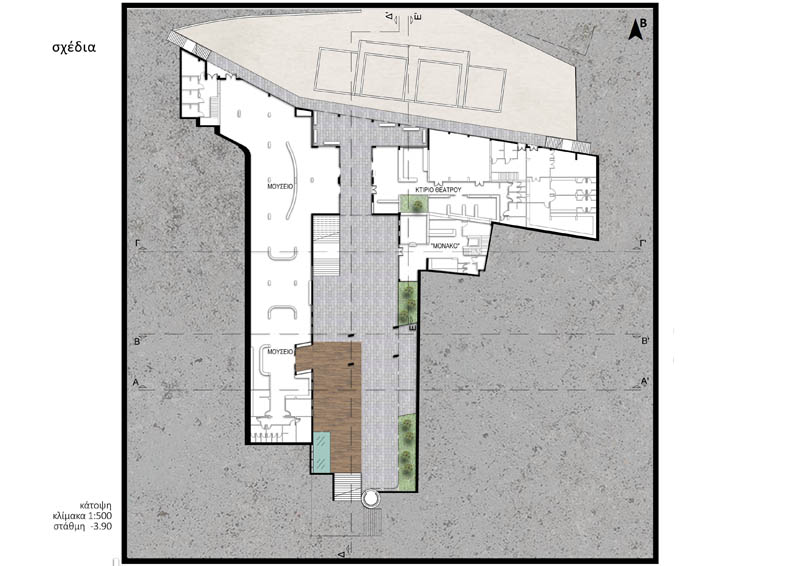

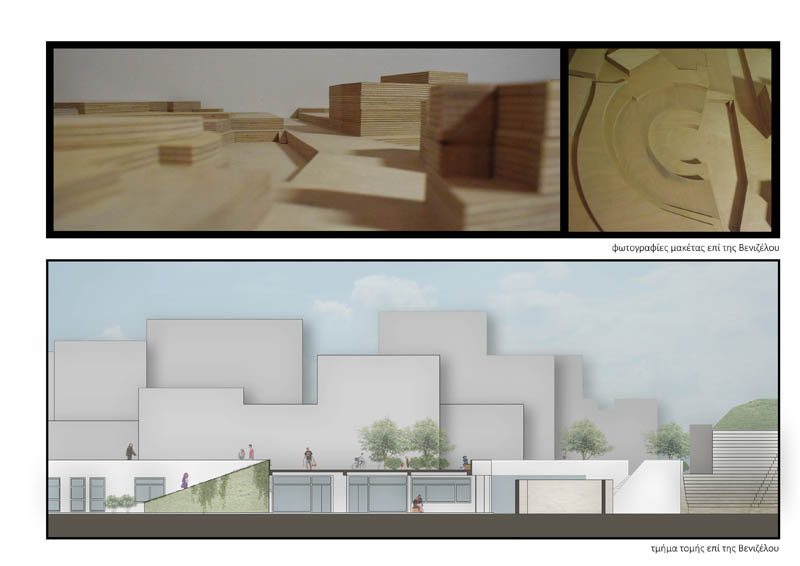

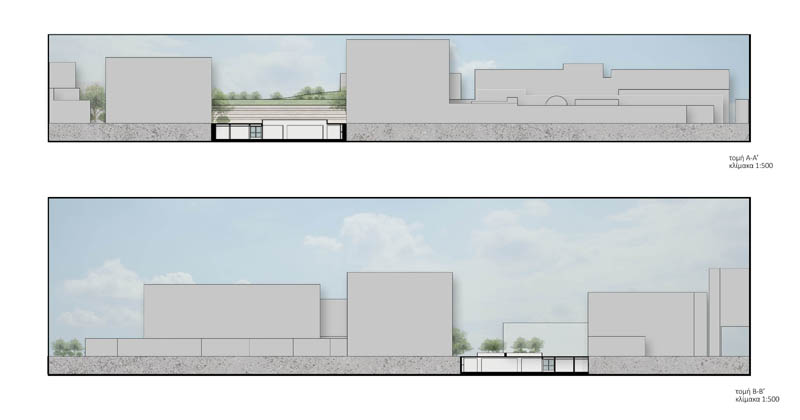



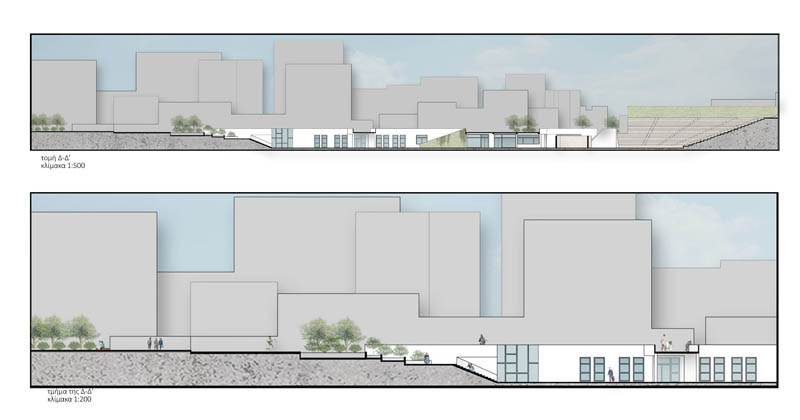

The main subject of this diplomatic study is the ancient theatre of Larissa, its designation – its exploitation and its connection with the surrounding area.
Since 1985, where the first drilling of a probationary cut took place until 1998, when the third phase of expropriation was completed, the ancient theatre of Larissa comes to light. During the excavations and during the construction of new buildings at the same time period, significant archaeological finds are revealed in the historic centre. At the same time, in the last 25 years, the municipal authorities are making an enormous effort to exploit the findings and restore the historic centre.
This proposal specifically focuses on the formation of the area of the new expropriations, in the section adjoining the southern side of the theatre and it’s surrounded by the streets of Papanastasiou, Venizelos, Apollonos and Cyprus.
It is an area constantly changing due to excavations and public construction conformations hosting mainly commercial and recreational activities.
The aim of the study - proposal is to strengthen the efforts of the authorities to promote the cultural heritage of the city, to accustom the inhabitants with these points and also the usage of the wider region as a cultural and tourist attraction.
It consists of interventions in the public space, arranging a masterplan, land use proposals and creation of social-cultural attractants. The structural interventions (the museum theatre, the events-lecture venues, theatrical library, staging areas, information-promotion booth, etc.) were organized in such a way as to support the theatre’s function, to preserve and develop the dynamics of existing activities and local businesses, to create new occurrences of life.
Supervisor: Kanarelis Theoklis
Reference Number: 667
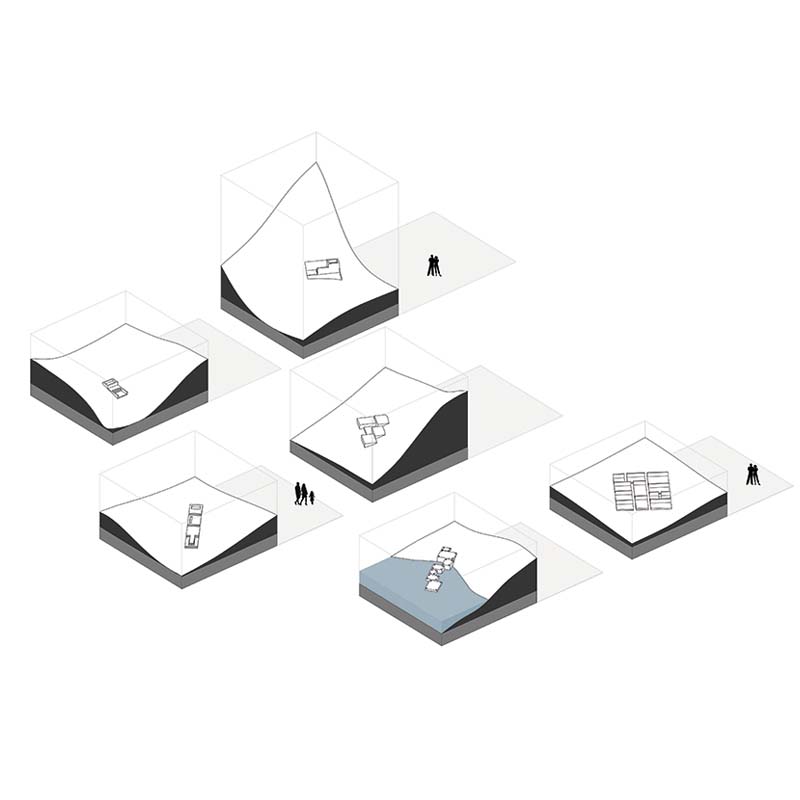

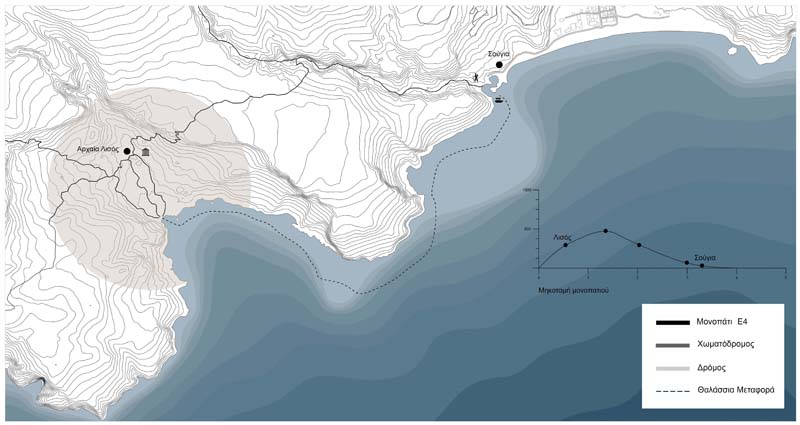





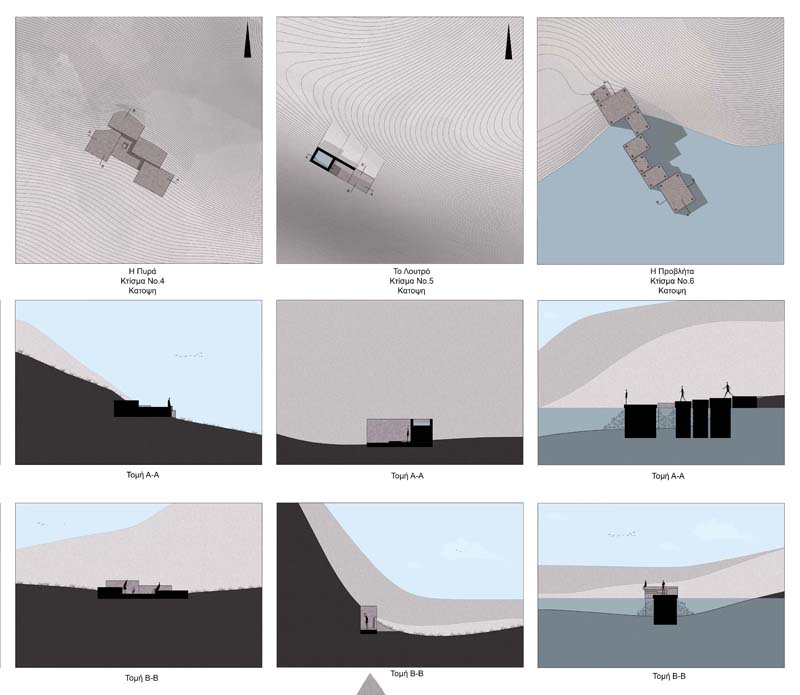

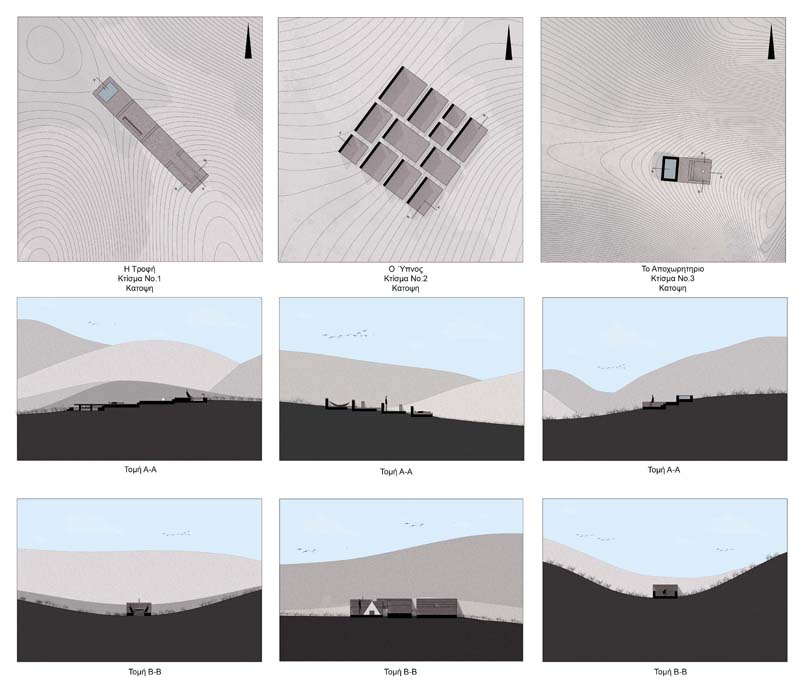

How does a place motivate us to inhabit it? This diploma deals with the issue of temporary outdoor living and more specifically, is about the outdoor living in the area of Ancient Lissos in Crete. Lissos is a stopover for walkers following the E4 European path and is only accessible by hiking or boat. It is therefore a place inaccessible, but due to this feature, it attracts travelers who seek to reconnect with nature, the minimum habitation within it and possibly their spirituality. In order to achieve this, they have accepted the fact that it is a time to miss a significant part of their comforts. The subject of the research in this work is this type of traveler who through the application of physical practice of walking, will try to uncover the meanings that connect man to the environment and urge him to become a resident. Architecture is the means to allow it to live and shape its life on the site by providing it with orientation elements and means of meeting its needs. But how can architecture approach a place that carries memories and ruins of the past, wounding and altering the character of the landscape as little as possible? During this exploration, a lot of conventional architecture practices were rejected and a new condition for habitation has been created. The new structures stand free and open to the landscape, losing their identity as buildings and offering the travelers a minimum coverage of their habitation needs in the context of outdoor living and collective life.
Supervisor: Paniyiris Costis
Reference Number: 691

